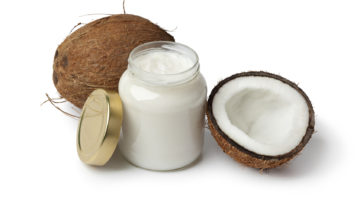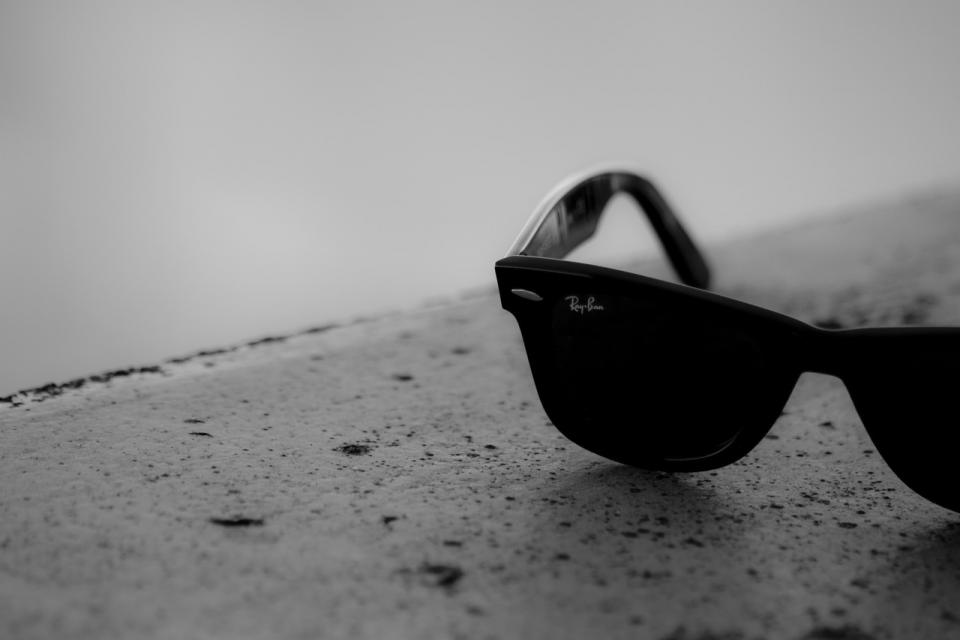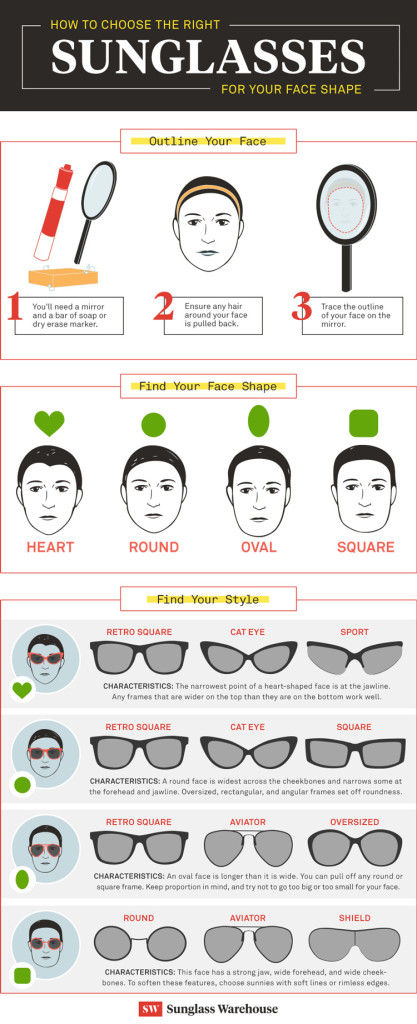We were looking for an excuse to close the deal on those Wayfarers we’ve been eyeing, and we think we’ve found it. This Saturday, June 27th, is National Sunglasses Day, just in time for the beginning of summer.
To get your summer started off right, we’ve put together a guide to finding your perfect pair of sunglasses. We’ve even sprinkled in bits of history and helpful UV radiation info, because we care. And because no one wants to go blind.
Enjoy, and feel free to celebrate by purchasing some snazzy eyewear.
History
For all that sunglasses are ubiquitous these days, they haven’t actually been around for all that long. Here’s a fast and furious history of our beloved sunnies:
Prehistoric Era
Inuits use walrus ivory to create sun goggles, blocking out the sun’s UV rays that reflect off the snow and ice.
1700s
Doctors prescribe tinted glasses for vision correction.
1930s
The Foster Grant company sells modern-day sunglasses on the Atlantic City boardwalk.
Eve of WWII
Ray Ban begins producing anti-glare sunglasses for pilots, known as “Aviators.” They’re a commercial success as well – and still are.
The Right Sunglasses for Your Face Shape
Sunglasses are as much about UV protection as style. Choosing a pair that gives you that James Dean swagger requires knowing your face shape so you can compliment your features. So if you have a round face, you probably don’t want to wear oversized bug-eye glasses, which will only make your face look rounder. The opposite is true if you have an oblong, angular face – you’ll want to soften things up with round lenses.
To get the full how-to on analyzing your face shape and selecting frame styles, check out the infographic below.
Lens Options
Not all lenses are created equal. Most will block UVB light (the kind that causes sunburns), but not all will block both UVB and UVA (the kind that can damage your retina). So look for lenses with a sticker that says it blocks 98% of UVA and UVB rays – or better yet, all UV radiation up to 400 nanometers, which is the equivalent of 100% of UV rays.
Full-spectrum UV protection is important, given that sun exposure can literally burn the surface of your eye, causing pain, redness, and blurred vision – as well as lead to skin cancer, cataracts, and macular degeneration.
And here’s a doozy for you: just because your sunglasses are tinted doesn’t mean they have UV protection. UV protection does not relate to the darkness or color of the lens. Also, the FDA doesn’t require sunglasses to actually have UV protection (the irony) so you’ll find companies that use that to their advantage. The lesson to take away from this? Street vendor sunglasses are probably a no-go. And don’t discriminate based on color – check the UV protection factor sticker instead.
Choose your lens type based on how much time you spend outdoors and what activities you like to do. Here’s a handy breakdown of the different types of lenses (via National Sunglasses Day):
- Anti-Reflective: Dramatically reduce distracting reflections, improving contrast, and comfort in difficult lighting situations.
- Impact Resistant: Lenses sold in the U.S. must be capable of withstanding impact testing.
- Mirror Coated: Reflect light across a wide spectrum, including infrared or heat rays.
- Photochromic: Automatically darken and lighten to provide the proper level of protection and comfort in varied lighting conditions.
- Polarized: Filter out reflected glare from shiny surfaces (water, pavement, dashboards) and improve contrast and visibility while reducing squinting and eyestrain.
- Wraparound: Shaped to keep light from entering the eye at various angles.
- Scratch Resistant: Significantly durable and minimize abrasions.












